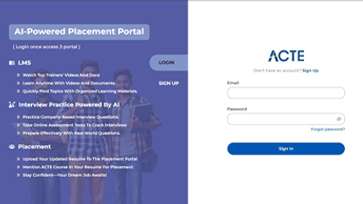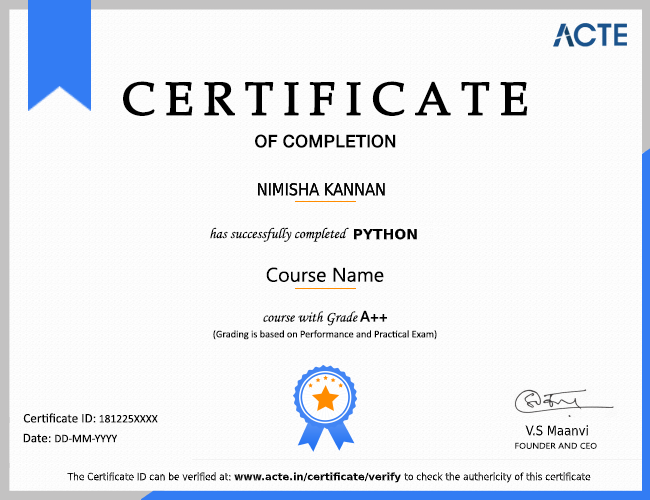HTML5 and CSS3 are essential technologies for web development, allowing developers to build dynamic, responsive, and visually engaging web applications. HTML5 provides semantic elements, multimedia support, and advanced form handling, while CSS3 enhances design with features such as animations, transitions, Flexbox, and Grid Layout. These technologies combine to create a robust toolkit for developing modern, interactive, and accessible websites. To effectively learn and apply these skills, explore HTML5 and CSS3 online training to stay current with the latest industry practices.
Additional Info
Future Scope of HTML5 and CSS3
- Industry Demand: HTML5 and CSS3 are used across industries like e-commerce, finance, healthcare, and technology for creating responsive and high-performance web applications.
- Career Opportunities: Mastery of HTML5 and CSS3 opens pathways to numerous roles, including Frontend Developer, Web Designer, UI/UX Developer, and Web Application Developer.
- Ongoing Innovation: HTML5 and CSS3 improve through community feedback and technological advances, enhancing performance, adding features, and streamlining development for modern developers.
- Career Advancement: HTML5 and CSS3 certification enhances web development skills and employability, allowing certified developers to earn higher salaries and secure senior roles due to high demand.
- Comprehensive Technology Ecosystem: HTML5 and CSS3 provide tools for creating scalable applications with reusable components, enhancing productivity and innovation.
- Industry Relevance: HTML5 and CSS3 are pivotal in enterprise landscapes due to widespread adoption and strong support from major tech companies, making them ideal for robust web applications.
- Gateway to Advanced Concepts: The HTML5 and CSS3 certification covers responsive web design, CSS Grid, and animations, enabling developers to specialize in front-end development.
Roles and Responsibilities of HTML5 and CSS3
- Frontend Development: Specialize in crafting responsive user interfaces for web applications with HTML5 and CSS3, designing adaptable layouts and dynamic features to enhance user experience across devices.
- Application Design: Collaborate intently with UI/UX designers to translate layout principles into purposeful internet pages, making sure the most appropriate consumer stories throughout numerous devices.
- Coding: Write clean, maintainable code with HTML5 and CSS3, following best practices and standards. Use semantic HTML and modular CSS techniques to keep your code organized, readable, and easy to update.
- Integration: Integrate backend offerings and APIs seamlessly, facilitating change in green facts and interplay among frontend additives and server-aspect functionalities.
- Testing and Debugging: Employing frameworks and browser developer equipment to behavior unit tests, together with give-up-to-give-up trying out to validate software functionalities.
- Performance Enhancement: Optimize software's overall performance by imposing techniques to reduce loading times, lessen server requests, and observe responsive layout techniques.
- Version Control and Collaboration: Use Git to collaborate with cross-purposeful teams, such as backend developers, UI designers, and assignment managers, to ensure alignment and green workflow.
- Documentation and Maintenance: Create and keep documentation for internet programs, detailing features, APIs, and deployment techniques to guide ongoing preservation and scalability.
Some of the Widely Used HTML5 and CSS3 Tools
- Text Editors: Specialize in creating responsive web interfaces with HTML5 and CSS3, designing adaptable layouts and dynamic features to enhance user experience.
- Browser Developer Tools: Tools like Chrome DevTools are essential for debugging web applications, providing features to inspect elements, analyze performance, and identify issues.
- CSS Frameworks: Bootstrap and Foundation simplify styling and layout with pre-designed components and flexible grids, allowing efficient creation of responsive, visually appealing websites.
- Preprocessors: Sass and LESS enhance CSS with features like variables, nested rules, and mixins, making stylesheets more maintainable, reusable, and easier to manage for efficient and scalable code.
- Build Tools: Gulp and Grunt automate tasks such as minification, compilation, and linting, helping to streamline development workflows, reduce manual effort, and enhance overall efficiency.
- Version Control Systems: Git and GitHub streamline collaboration and version management, making it easier to track changes, coordinate work among team members, and manage project iterations.
- Responsive Design Tools: Tools like Media Queries and frameworks like Bootstrap ensure web applications are mobile-friendly and responsive.
Benefits of HTML5 and CSS3 Training
- Skill Enhancement: HTML5 and CSS3 schooling complements your talent in internet improvement, overlaying semantic elements, responsive design, and superior styling strategies.
- Industry Alignment: Training guarantees you stay applicable in the process marketplace by aligning your abilities with HTML5 and CSS3`s vast adoption in agencies worldwide.
- Increased Efficiency: Learning today's capabilities and acceptable practices of HTML5 and CSS3 boosts your productivity and allows you to create scalable and maintainable programs more efficiently.
- Career Opportunities: Certification in HTML5 and CSS3 opens doorways to numerous roles, including Frontend Developer, Web Designer, and UI Developer, increasing your career options.
- Practical Learning: Schooling gives hands-on enjoyment through real-international projects, assisting you in observing theoretical know-how and constructing a robust portfolio.
- Community Engagement: Joining the Internet improvement network gives access to resources, updates, and collaborative learning, fostering continuous talent enhancement.
- Future-Readiness: HTML5 and CSS3 schooling prepares you for upcoming improvements in the internet improvement, making sure you live beforehand inside the evolving internet generation landscape.
- Validation: Completing HTML5 and CSS3 schooling and acquiring certification validate your expertise, improving your credibility and beauty to ability employers.
- Advanced Techniques: You'll master advanced techniques such as Flexbox, Grid Layout, and CSS animations, which are essential for creating exceptional web applications.
- Personal Development: Training in HTML5 and CSS3 complements problem-fixing abilities, essential thinking, and creativity in growing interactive consumer interfaces and fixing complicated improvement challenges.
Show More































